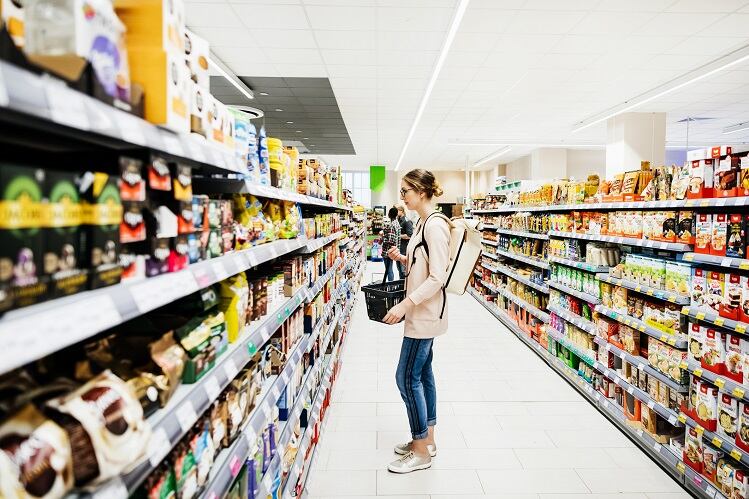In the first-quarter of 2019, FMCG purchases in Latin America were down 1.7% compared to Q1 2018 and dropped a total of 0.7% for the year ending March 2019, according to Kantar Worldpanel, a global consumer insights and market research firm. FMCG products are those sold quickly at a relatively low cost, such as packaged foods, beverages, toiletries, and over-the-counter rugs. The beverage and dairy categories were hardest hit, with consumption down in at least five countries, including Argentina, Brazil and Mexico.
“We've reached an important turning point in the LATAM region, where the FMCG market is no longer growing,” said Virginia Garavaglia, marketing director for Kantar Worldpanel LATAM.
Despite this, actual FMCG value in Latin America was up 5% in Q1 2019 and up 3.8% for the year ending March 2019. “This means, we buy less and we pay more for it,” Garavaglia told NutraIngredients-LATAM.
Brands must target the 'bigger purpose' beyond sustainability
Writing in Kantar Worldpanel's recent report Disrupting the Future: A guide to growth in LATAM 2019, Garavaglia noted consumption patterns in Latin America were “changing fast”, with consumers “buying in a very different way” – switching brands and channels and prioritizing health and environmentally friendly packaging.
According to the report, brands operating in the region now had to have “a bigger purpose: to make lives better”, moving beyond sustainability to support social development and champion ethical and environmental issues.
But, Garavaglia said all this had to be done while taking into consideration certain “constraints” in typical LATAM households. Unemployment in the region, for example, remained high at 8% and the majority of the population were low-income consumers – the equivalent to 46 million households. Total average spend on FMCGs was also low at $1,500 per year, which equated to $1 per person, per day, she said.
“The average spend is so low because shoppers don't buy in all categories: a typical LATAM family will only buy in 62 of the 160 categories analyzed by Kantar Worldpanel. Brands and retailers need to motivate consumers to start purchasing products and categories for the first time. This means spending less time focusing on the needs of existing customers and instead working to understand why people haven't yet bought a product and how they can be persuaded to try it.”
For manufacturers in the health and nutrition space, Garavaglia said this meant working closely with professionals in the sector, such as doctors, gyms, personal trainers and pharmacists, would be key.
“Recommendations from doctors or professionals is highly appreciated in the region.”
She said it would also be worth choosing retail channels wisely. The direct-to-consumer model, for example, presented good opportunities for health and nutrition brands in urban metropoles, she said, as did selling through pharmacies or drugstores.
Regionally, the strongest growth was in Cash & Carry, discounter and pharmacy formats, she said, largely driven by local retailers and e-commerce remained the “the least established”, representing just 0.1% of the market in 2018. This was due to low credit card ownership, little trust around online payment methods, high delivery costs, and a high frequency of shopping, she said. And should nutrition brands wish to sell through the e-commerce channel, Garavaglia said there would be certain “barriers to overcome”, including the fear of copycat products and smuggled goods.
Innovative success? The planet, indulgence and wellbeing, local flavors...
Kantar Worldpanel said there were three key trends to consider when innovating in Latin America: the planet, balancing indulgence and wellbeing, and local flavors.
In its report, the research firm detailed that “an increasing number of shoppers” were looking for eco-friendly packaging and ingredients, with young consumers looking for a “much more ethical proposition”. Social development was also flagged as important, even more so than the environment.
At the same time, LATAM shoppers wanted to balance indulgence and wellbeing which meant brands had to improve and innovate product labeling to provide more information on nutritional values and highlight key attributes, Kantar Worldpanel said.
And within all of this, local flavors presented plenty of opportunity – aligning with “national pride, origins, rituals and family values”.
“Finding growth in the LATAM market has become more of a challenge – but it is possible,” said Garavaglia. “The 'hotspots' of growth have shifted, so brands and retailers need to shift their mindsets and their strategies too.”
Cecilia Alva, clients and new business director for LATAM at Kantar Worldpanel, previously identified millennials in LATAM particularly promising for the nutrition space, given their connection with health and wellness and the fact they represented 24% of total FMCG spend in the region.

